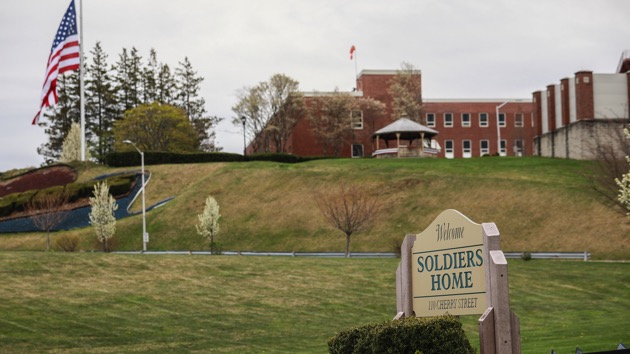Matthew Cavanaugh/Getty ImagesBy ARIELLE MITROPOULOS and ELLA TORRES, ABC News(HOLYOKE, Mass.) — An independent investigation into the Soldiers’ Home in Holyoke, Massachusetts, a state-run facility where more than 90 residents died since the coronavirus pandemic began, found that “substantial errors” and “utterly baffling” decisions by the home’s leadership likely contributed to the tragedy.The report on the investigation, however, said the home’s leadership, including suspended Superintendent Bennett Walsh, did not conceal the situation.”Our analysis of the Home’s preparations for and response to COVID-19 in light of existing public health recommendations has identified substantial errors and failures by the Home’s leadership that likely contributed to the death toll during the outbreak,” according to the report, which was released Wednesday and signed by attorney Mark Pearlstein, a former federal prosecutor.”Indeed, some of the critical decisions made by Mr. Walsh and his leadership team during the final two weeks of March 2020 were utterly baffling from an infection-control perspective, and were inconsistent with the Home’s mission to treat its veterans with honor and dignity,” the report added.Ninety-two veterans died at the Soldier’s Home — nearly 40 percent of the population. Seventy-six of those who died had tested positive for COVID-19.The investigation was ordered by Gov. Charlie Baker.The report described leadership’s “most substantial error” as a decision on March 27 to move all the veterans from one locked dementia unit into the other.At that time, each unit had some veterans who had tested positive COVID-19, some of whom were suspected of having the virus and others who were not displaying any symptoms, according to the report.Rather than isolating those with COVID-19 from those who were asymptomatic, more than 40 veterans were “crowded into a space designed to hold 25,” the report stated.”This overcrowding was the opposite of infection control; instead, it put those who were asymptomatic at even greater risk of contracting COVID-19,” according to the report.Staff members who were interviewed for the report spoke of the harrowing situation.A recreational therapist who was instructed to help with the move said she felt like she was “walking [the veterans] to their death” and that the veterans were “terrified.”A social worker said she “felt it was like moving the concentration camp—we [were] moving these unknowing veterans off to die.” Another described the unit as resembling “a war zone,” with some veterans clothed, some unclothed, and some obviously in the process of dying from COVID-19.Other errors at the home included delays in closing common spaces, failure to stop rotation of staff among units, inconsistent policies and practices with respect to personal protective equipment and record keeping and documentation failures.“Even the best preparations and most careful response cannot eliminate the threat of COVID-19. But this does not excuse a failure to plan and execute on long-standing infection control principles and to seek outside help when it is required to keep patients safe—indeed, the extraordinary danger of COVID-19 makes these steps all the more important,” the report said.The report helped answer the long-standing question of what went so tragically wrong inside the home.Employees previously told ABC News that in the early days of the pandemic, staff members were not given face masks. They also said some of the residents were moved to other rooms, leading to overcrowding and possible further spread.Family members said they struggled to reach anyone at the home when the virus appeared to be running rampant at the end of March.One daughter of a veteran at the home, Susan Kenney, told ABC News she waited for days to hear about her own father’s condition after learning of the home’s first COVID-19 case.She said she eventually decided that she would drive down to the home herself. Kenney made sure she would be noticed by staff, so she painted 12 words on the side of her car: “Shame on you, Soldiers’ Home. It’s been 30 hours with no callback.”Kenney’s father eventually did test positive for COVID-19 and died on April 15.An attorney for the suspended superintendent of the Soldiers’ Home, Bennett Walsh, said at a press conference in May that Walsh did not keep anyone “in the dark” about the growing crisis inside.Attorney William Bennett, who is also Walsh’s uncle, repeatedly insisted that Walsh took several steps to notify state and local officials about the growing rate of COVID-19 infections among veterans, but that Walsh’s requests for medical assistance for the facility were denied.Walsh was placed on paid administrative leave on March 30 after state officials visited the facility.The report released Wednesday found that Walsh was “not qualified” to manage a long-term care facility. The report also noted that his “shortcomings were well known to the Department of Veterans’ Services” but the agency failed to effectively oversee the home during his tenure despite a statutory responsibility to do so.There are three other investigations ongoing into the home and its response to the COVID-19 pandemic.Copyright © 2020, ABC Audio. All rights reserved.












